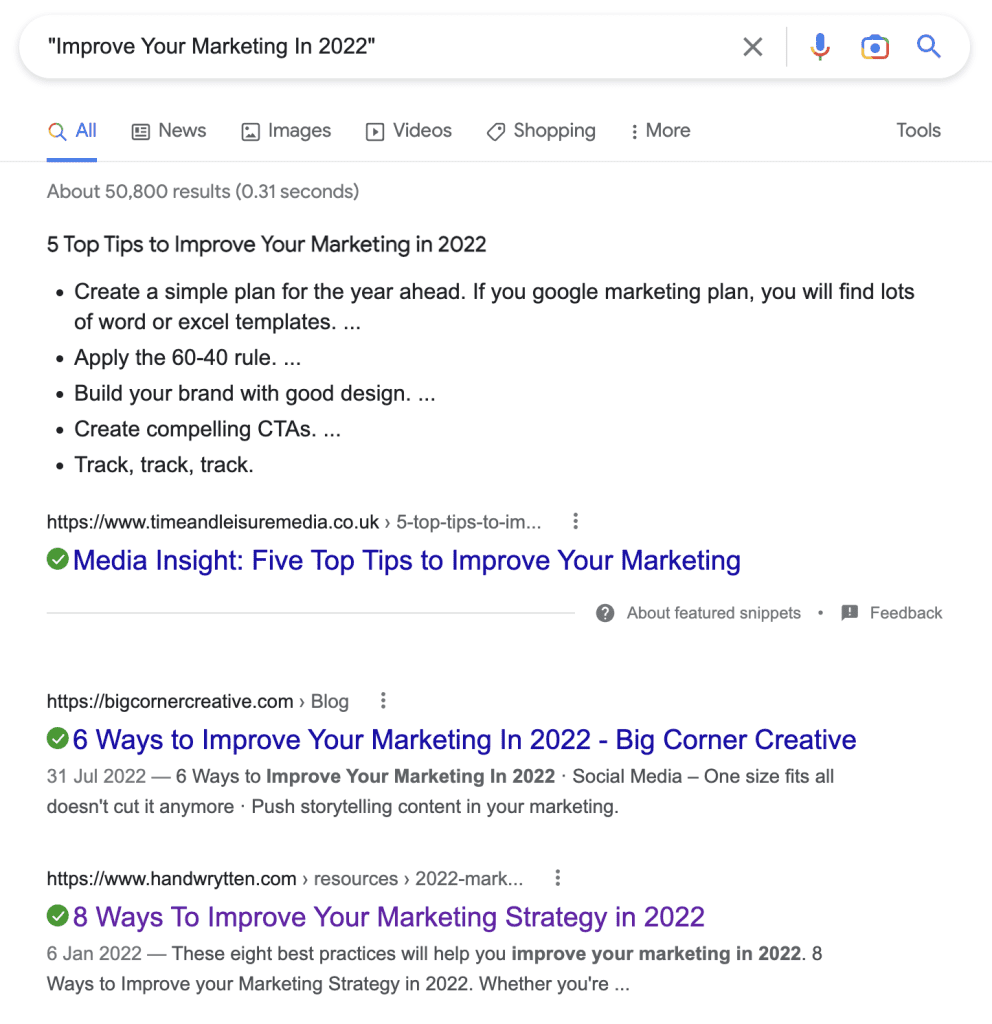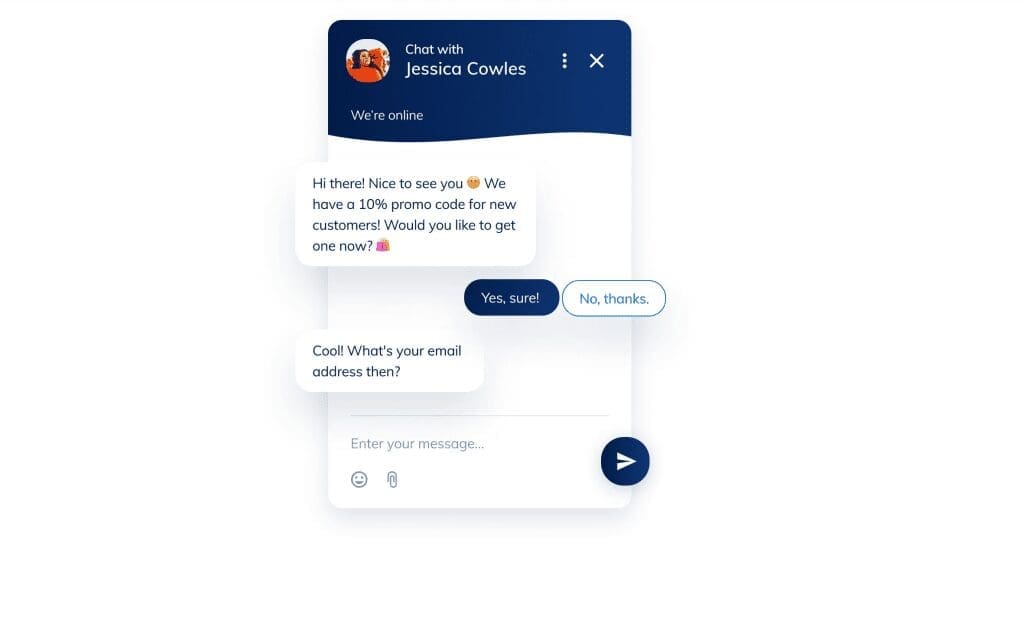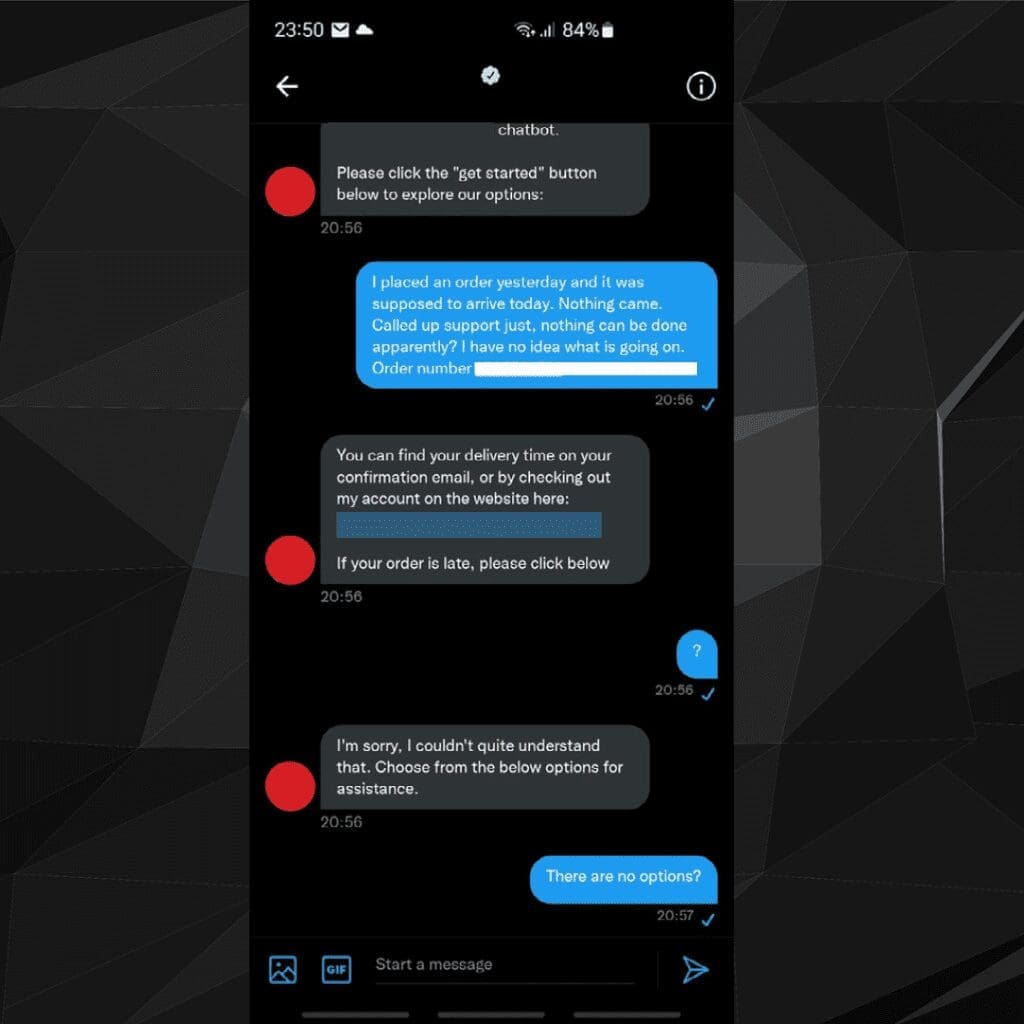Editor’s note: within literally days of creating the below guide, the creators of DALL-E, OpenAI, launched ChatGPT. Our 6th January 2023 update to this guide expands on our summary of AI copywriting and written text, by covering the ChatGPT BETA service now being offered by OpenAI and how this changes everything. Read more here.
There have been huge leaps in Artificial Intelligence over the last decade, but for content creators and digital marketers, is there any practical use for AI? If so, is this accessible to your average business? In this guide, we will try to answer that question and cover some of the most popular AI marketing tools available today.
The origins of AI
- 1 The origins of AI
- 2 What is AI used for today?
- 3 AI marketing tools for content creation
- 4 AI images
- 5 AI copywriting, articles and written text
- 6 AI video creation
- 7 AI chatbots
- 8 How will AI impact the future of content marketing?
- 9 Conclusion: Are AI marketing tools a content creator’s best friend or not?
Firstly, it is important to know and understand where it all began. The first work on AI was conducted as far back as the 1930s where Alan Turing conceptualised a system that would closely resemble that of modern computers.
The first AI program was created by Christopher Strachey who was a British computer scientist. This program was first written in 1951, and a year later was able to play a game of checkers. AI has come a long way since then, and is now used for many different purposes ranging from navigation to image upscaling and analysis.
What is AI used for today?
Many people think that AI is still a set of technologies that are somewhat gimmicky and without a real-world use case. That couldn’t be further from the truth. AI is used in a number of modern day vehicles, appliances and software.
Here are some examples of how artificial Intelligence is being used in 2022.
- NVIDIA DLSS / AMD FSR enabled GPUs — Image enhancement and upscaling
- Tesla Autopilot AI — Object detection and monocular depth estimation
- Voice assistance — Features such as Apple’s Siri
- Medical analysis — Medical image analysis is powered by AI
- Content Marketing — Content creation and marketing using Artificial Intelligence
For the remainder of this guide, we’ll be focusing on the last point, in particular AI content creation and AI marketing tools.
AI marketing tools for content creation
So what role can artificial intelligence play when it comes to content marketing? In the last few years there have been an increasing number of tools that allow for unique content creation through artificial intelligence. Let’s take a look at some of these AI marketing tools, and find out how viable they are for content marketing.
AI images
There are various AI image creation tools online, many of which are being popularised by users on social media.
Our no. 1 choice DALL-E
DALL-E is a free online tool powered by AI that can generate realistic images based on user input via text. New users get 30 credits to use and 15 per month thereafter. You can also buy more credits if you don’t want to wait another 30 days after using up your allowance.
Here is an example of what we generated using DALL-E based on the request ‘oil painting of the English countryside’.

An example of AI image creation using DALL-E
This AI image tool not only creates a unique picture based on user input, but it can create images in specific styles too. As you can see we specified ‘oil painting’ as a style, but you can also specify any other stylistic preference in the text field.

Generated image based on the input “A cup of coffee sitting on a window ledge next to a window in autumn”
AI image creation combined with editing for personalisation
As you can see above, DALL-E can also create hyper-realistic images based on set criteria. In this image of a coffee cup, I specified that the cup is on the window ledge in Autumn. The AI does the rest, and consistently creates impressive results.
We liked this tool so much we even used it to help create artwork for one of our client’s social media campaigns recently. With the help of an image editing package from Adobe Creative Cloud, we quickly managed to personalise the image and include our client’s own branding.

AI image was created using DALL-E combined with Adobe Express
The left side of this image containing the logs and the house was created using the DALL-E AI tool, whereas the leaves and the text were created using Adobe. This just goes to show how powerful these online tools can be when used together.
This is a real-world example of how you can use AI tools that are currently available within your content marketing.
There is also another impressive feature within DALL-E that uses AI to expand existing images, predicting what would likely exist outside the view of the camera. We decided to play around with this so we could show how it works in this blog.
How does it work?

Image 1 — First image generated by DALL-E
This first image was generated via DALL-E after we typed in ‘AI’. This is impressive already, but let’s try and expand the image using the generation frame tool.

Image 2 — Expanding the original image within DALL-E
We uploaded our first image into DALL-E, and asked the AI to expand the image to the right. You can input any keywords that specify what you think should be in the generated frame. We just typed in ‘background’ and let the tool do the rest as you can see above.
DALL-E shows a few expansion frame candidates that you can scroll through until you find the one that works the best.

Image 3 — Generating the left frame
We did the same thing as we did in image 2, only this time we generated a frame to the left of the image. We used the same expansion keyword of ‘background’, and the tool finished the AI image.
We were blown away at the results. It’s even more impressive as this can be done with real images that you have taken with your camera. The AI predicts what will exist on either side of the image, and generates it based on your specified keyword.
DALL-E definitely has a lot of potential and is already a brilliant tool to have at your disposal for content marketing.
What about AI image copyright?
In terms of the copyright, it’s somewhat of a grey area.
The good news is, generally speaking, you are free to use the images generated with DALL-E as you see fit (including commercial use).
AI copywriting, articles and written text
AI writer is an online tool that allows you to create a full AI article from just a headline. The content generated is also labelled as ‘SEO friendly’ and aims for an authoritative tone.
We thought we’d take AI Writer through its paces by having it create a 500 word article based on the headline: ‘How to improve your marketing in 2022’.
After waiting 3-5 minutes for the AI article to generate, it was complete and we were given the option to download the document.

AI copywriting and text creation using AI Writer
The following is a segment directly from the article that was generated entirely by AI:
To improve your marketing in 2022, it is important to have a strategy plan in place. You can use different online channels to reach your target audience, such as social media, email marketing, and marketing websites. You can also use digital marketing tactics, such as search engine optimization (SEO) and pay-per-click (PPC) campaigns. You should also focus on building a product or service that is unique and appealing to your target audience. Overall, you should make sure that your profile looks professional and that you are using different strategies to reach your target audience over a long period of time. — AI Writer’s generated article
You can find the full article generated completely by AI here without any edits.
So, what did we think and does it pass our typical SEO and copywriting checks?
The short answer, is no, but we’ll explain more below:
Grammar and spelling
Most modern text editors like MS Word have spelling and grammar checking, which are essential tools for any copywriting. We like to use Grammarly (more on this below), but with a simply copy+paste, issues with this AI article became clear very quickly, e.g.

AI copywriting text and suggestions being made by Grammarly
In this example, there is clearly a missing word, but on the whole, the suggestions being made by Grammarly were minor and largely subjective based on your writing style. We couldn’t find any spelling errors, which was to be expected.
SEO, duplication and Google
The first check we do is to assess whether there is duplicate content. It’s clear from the sources provided that AI Writer has used text from other websites. Our guess is that it has done some clever article spinning, rather than advanced AI, to ensure the output is unique and passes tools like Copyscape. As expected, no duplication is reported by Copyscape.
However, another way to check for duplication is to select fragments of text and search Google manually using quote marks to ensure the exact text is checked. As can be seen below, we simply search for the title within quotes and one of the sources provided comes up position 2 for the text/topic – handwritten.com, which is kind of ironic given the subject matter we are covering.

A manual check in Google for AI copy duplication
Arguably, the job of a perfect AI copywriting tool is to use intelligence to provide a truly unique (not spun) article that is believable when read by human readers and Google.
As the world’s largest search engine, Google is arguably one of the world’s most advanced AI systems, so when searching for a string of text like this, we wouldn’t expect there to be any obvious correlation to the sources used. If searching for the title returns one of the sources within the top 3 results of Google, we must believe that Google is clever enough to put things together. So, with that in mind, why would Google choose to rank our new content over and above the original…
As copywriters, we all use other sources for ideas and inspiration, but the goal is simply that, inspiration, and not to re-hash what’s already been said. Ultimately, we want to outrank those sources due to the additional value and unique insight we are providing.
Now, let’s consider the human touch.
Does it pass the “human touch”?
If you’ve tried to read the AI text, you’ll have probably given up a few sentences in.
It all feels very dull and repetitive. As human’s, we’re intuitive and often know when something is off, even if we can’t pinpoint it. In this case.
In the example below, the word “strategy” seems over-used and the AI text makes a clear switch to suddenly talking about social media is if it’s now using a different source for the text.
There’s a strange numbered bullet point style in the second paragraph below, which seems out of place given the rest of the article.

Something just “feels a bit off” with the text
If we search for the title again within the main text, it seems over-used and unnatural. A hand-written article would be less likely to repeat this text exactly the same way. This jumps out as an automated attempt at performing SEO. Keyword density tools like this one can be useful when trying to detect this kind of repetition.

Repetitive phrase usage in AI article – probably for SEO.
While this attempt at AI copywriting is nowhere near as impressive as DALL-E when it comes to AI image creation, solutions like AI Writer could still be a useful in your tool box when it comes to content marketing.
In summary, we certainly wouldn’t recommend publishing these AI articles (or even segments of its AI copywriting text) directly to your website without reviewing and adding your personal touch first. Ideally, these tools will simply serve as great templates to work from to provide inspiration and useful ideas.
Only days later, ChatGPT gets released – and this changes everything (06.01.23 edit)
OpenAI released ChatGPT (https://chat.openai.com/chat) on November 30 2022. Read our article below to understand how this completely changes our perspective on using AI for copywriting, articles, written text – and even SEO. It really is a game-changer! Find out more below:
- What is GPT-3 and how is this different from ChatGPT – https://opace.agency/blog/what-is-gpt-3-how-is-this-different-from-chatgpt
- Using ChatGPT for SEO – https://opace.agency/blog/using-ai-for-SEO-chatgpt-guide
- Using GPT-3 and ChatGPT for meta data creation – https://opace.agency/blog/openai-gpt-3-chatgpt-ai-meta-data-tool-for-SEO
- 40 Killer ChatGPT Prompts For Marketing Content Ideas, SEO, Social Media & More – https://opace.agency/blog/chatgpt-prompts-for-marketing-content-ideas
- ChatGPT vs Bard vs Bing or ??? Decoding the Future of the AI Search Engine – https://opace.agency/blog/chatgpt-bard-bing-ai-search-engine
- ChatGPT prompt engineering for SEO and content creation – https://opace.agency/blog/chatgpt-prompt-engineering-for-content-and-SEO
- Are we at an AI inflection point with ChatGPT? – https://opace.agency/blog/ai-inflection-point-to-surpass-the-internet
- Is open source AI the future? – https://opace.agency/blog/open-source-ai-is-the-future
- Using ChatGPT with Google Search Console – https://opace.agency/blog/chatgpt-google-search-console-data-SEO-analytics
- Using ChatGPT with Google Analytics – https://opace.agency/blog/SEO-analysis-using-chatgpt-google-analytics
- AI-Scribe: The ChatGPT Powered SEO Content Creator by Opace – https://wordpress.org/plugins/ai-scribe-the-chatgpt-powered-SEO-content-creation-wizard
- ChatGPT plugins for WordPress Comparison – https://opace.agency/blog/chatgpt-wordpress-plugins
- The Future of AI: Exploring AGI, ASI, ANI & Our Journey to GPT-5 in the Quest for True Artificial Intelligence – https://opace.agency/blog/future-of-true-ai-agi-gpt-5
- The Adventures of ChatGPT “The AI Storyteller”: A Child’s Journey into What ChatGPT is & How It Works – https://opace.agency/blog/what-is-chatgpt-how-does-it-work
- Finally, A WordPress Blog Creator Plugin & AI Content Generator for SEO Using ChatGPT 16K & 32K Models – https://opace.agency/blog/wordpress-blog-creator
AI video creation
If you do a quick search for “AI video creation”, you’ll find several names that repeatedly pop up in Google.
For this guide, we’ll focus on Synthesia. Titled as “#1 AI Video Generation Platform”, this is an interesting platform for creating AI videos as part of your content marketing strategy. Synthesia is an AI marketing tool designed specifically to allow users to make their own videos using a virtual avatar and voice over.
There are many different avatars to choose from based on your preference and requirements.
AI generated avatar and voice over
We made a test video using this tool and were quite impressed with the results. You can see the results in the video below.
More advanced AI video content
We tested a few different tools including elai.io and jasper.ai, which are both worth a mention.
Elai in particular allows you to select from a wide range of templates and languages – the AI tool will even pull content from a blog post, try to make it more ‘video friendly’, supplement it with royalty-free images and incorporate your AI generated avatar and voice over. The below example shows how the un-rendered export of this blog using Elai. The lip syncing isn’t yet added but you can get a feel for how the video looks and sounds.
Potential uses
There are lots of great applications for this kind of AI video content, e.g.
- Company training videos alongside screen capture
- Explainer videos to introduce or explain a topic
- Product videos for an e-commerce site
- Company news updates
- And much more…
Despite this, the question needs to be asked whether we should be using these kinds of videos and do they do more harm than good. This largely depends on the application, but we felt the most important considerations was whether they pass the human touch.
Does it pass the “human touch”?
To answer this, we asked whether we would use these services ourselves. After careful consideration, we decided that we wouldn’t for the following reasons:
- Lip syncing – this is the biggest issue – within a second or two, it became very clear to us that the voice didn’t belong to the person and was ‘out of sync’, similar to when watching a foreign/dubbed movie
- Subtle movements and gestures don’t seem real – a bit like with AI text generation, there’s something a bit unnatural about how the avatar moves and their gestures
- Accents and language issues – it’s not so clear with the above video example, but with more complex text that we added (e.g. technical content), there were clear language and phrasing issues when it came to certain text, e.g. abbreviations spoken incorrectly, unnatural pauses where they don’t belong, and text being spoken too quickly. When using Elai with the British accents, none of them sounded like real people whereas the US accents sounded more believable
In summary, whilst this technology is very impressive, we felt the above issues meant that the content was more off-putting than useful. When asking for feedback, the words “tacky” and “impersonal” came up. We’re not quite at the point of producing recorded videos for each article we write, but we have decided to pursue the more traditional option of having the author produce a spoken version which we can save/upload as an audio file and share using podcast sites.
For those who want to create engaging video content and don’t mind the above reservations that we have, this is certainly a clever and promising solution for small businesses that don’t have a large marketing budgets or the time/desire to be on camera. It’s also very likely that the technology will improve as AI advances.
AI chatbots
AI chatbots aren’t a form of content in the same way as the above AI tools, but they are possibly more well known and adopted by businesses and marketers alike. For this reason, we felt we would be amis not to give AI chatbots a mention.
According to Microsoft, over half of all enquiries received by chatbots were resolved without the need to hand off to a human. This data was compiled in 2017’s report, so it’s safe to assume that percentage is much higher now in 2022.
Many chatbots such as Tidio make use of Deep Learning and Natural Language Processing (NLP) to create realistic interactions with users. The great thing about this is that it works across multiple languages, allowing you to answer enquiries that you would otherwise miss.

An example of chatbot AI. Image source: Tidio
You could easily integrate your chatbot with your content marketing strategy, posting links to relevant useful marketing material where applicable. Another benefit of using a chat bot powered by AI is that they are available to answer customer questions 24 hours a day, 7 days a week.
It’s common for retailers and service providers to use chatbots currently. However, if they aren’t implemented correctly, they can be very frustrating to deal with. Most good AI chatbots are also expensive and require a significant investment to configure them properly.
Below is an example of a chatbot used while writing this guide:

Chatbots can be great for assisting customers, but frustrating if they don’t function correctly.
Sadly, as with the AI copywriting and AI video tools mentioned, we have opted not to use AI chat solutions for very similar reasons. On this website, we have implemented a Live Chat system with some very basic questions at the start, but this is by no means powered by Artificial Intelligence and we don’t use any kind of AI chatbots.
The worry with all these AI tools, is that they could do more harm than good to your brand if users feel they aren’t dealing with a real person.
AI writing support tools
The final tool we are covering is Grammarly.

Grammarly – AI-powered writing assistant
Instead of going all out and using an AI copywriting tool like AI Writer, many content creators opt to use Grammarly. The tool describes itself as an “AI-powered writing assistant” and it provides this assistance by giving spelling and grammar suggestions as you type. These AI-based suggestions also help with improving the tone and style of your text.
Users can choose to paste in whole articles or documents for feedback and suggestions, which makes this a fantastic tool for quality checking content.
With an extension for your web browser, you can use Grammarly’s in-built document creator, or even use it in conjunction with your favourite online text editors or blogging platform. There is even an add-on for MS Office and Outlook, which makes this a truly useful and versatile AI tool.
Of all the AI marketing tools mentioned, Grammarly is the one that we use day in and day out and will always recommend. Because this is a support tool/aid content creation, rather than a tool to try and imitate and automate content creation, it really is the ideal AI tool to assist content creators. Plus it’s completely free.
How will AI impact the future of content marketing?
It’s an exciting time for artificial intelligence and its practical uses, but it’s about to get even better. Algorithms that power tools such as DALL-E can be expected to emerge in the gaming and VR space powering procedural level generation in video games and virtual worlds.
This could potentially impact metaverse experiences too allowing for worlds to be created instantly that are different for everyone, but matches a set theme.
AI marketing tools will definitely continue to improve and adapt to better suit content marketing requirements. Many people ask if AI will replace the need for human involvement, but we imagine a future where humans and AI systems work closely together in an integrated way.
Here are some key areas where AI will have an important role to play:
- VR experiences (including the metaverse)
- Helping you gain a deeper understanding of your demographic for improved targeting
- Even more impressive image and video creation
- Sophisticated AI systems that provide troubleshooting assistance for users
- Connected automation across systems and software
We will see an improvement of voice assistance applications such as Siri and Alexa, with more integration and in-depth compatibility with third-party software. It’s easy to imagine a future where you can use voice to say ‘post about our new product across social media channels, and create an email marketing campaign based around this topic’. Then everything is taken care of for the user.
Stored information paired with contextual based AI will be one of the big challenges and breakthroughs for future artificial intelligence. We are only a decade away from this type of AI. Beyond that, it’s not a matter of ‘if’, but ‘when’ in terms of AI systems becoming indistinguishable from humans.
Conclusion: Are AI marketing tools a content creator’s best friend or not?
AI tools such as those mentioned above are already at the point where they can be used to enhance your existing content and digital marketing efforts.
DALL-E is particularly exciting and can be used for a wide variety of marketing material, removing the need for stock imagery in some cases. Grammarly will continue to be an essential AI tool for many copywriters.
AI copywriting assistants and AI video creation tools still need work to pass our tests and become a part of our marketing toolkit, but we do admit that they may have some useful applications and can certainly help marketers come up with new ideas.
For tools such as those above to become widely adopted, they need to mature to a point where the AI content is indistinguishable from human work.
As for chatbots, they can be a fantastic tool provided they are configured correctly to deal with customer enquiries and expectations. Chatbots can easily be frustrating for customers if they aren’t configured correctly, e.g. just asking a questions that will later be asked again once transferred to a human support agent.
We believe that if a user is taking the time to chat, read an article or watch a video, they want an experience that feels genuine and personalised to them. In most cases, we’re not quite there yet and users still prefer human engagement and content, but that doesn’t mean these AI tools should be ignored by content marketers and creators. With all of the AI marketing tools we’ve reviewed, they are useful at worst and invaluable at best.
What are your thoughts on AI? Are you using any tools to enhance your content marketing? Let us know in the comments below.






Insightful post on how AI marketing tools can benefit content creators. It covers a range of options, from automating tasks to analyzing data, and can help streamline the content creation process.
Appreciate the feedback Luke. With the soon-to-be-released GPT-4, we expect there will be even more exciting AI marketing tools and applications coming onto the scene.